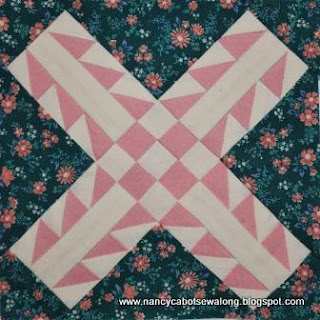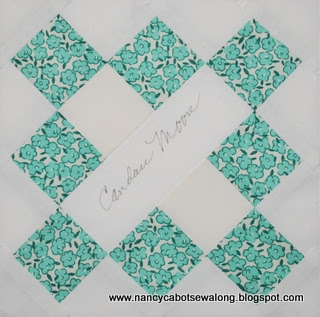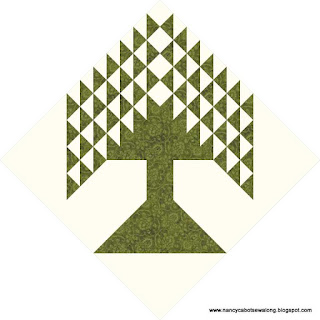 |
| Old English Flower Garden quilt block |
January 31, 1933-"Printed Posies Grow on Gingham Stems in Quilts" was the title of Nancy Cabot's column this day and it introduced the Old English Flower Garden quilt block.
This is the first applique pattern to be published by her. She instructs readers to "adventure with color" by varying the fabrics for the flowers and the flower pot. I think she means from one block to next but I used three different yellow fabrics for my flowers and green gingham for the stem as she suggests! I think the block would look cute with tiny buttons for centers.
To see an antique block, go here.
Nancy suggests the blocks "be set together with strips of color and joined with small blocks of prints." I think that would be quite striking if making a whole quilt of these blocks.
To make this block, use whatever type of applique you like. I did mostly fusible applique but then used English paper piecing on the hexagon flowers. Have you ever gotten the little sample pack at a quilt show from the Paper Pieces booth? Well, I have several times and the little hexagons in the pack are close enough to the size of the template that I used them. I think the flowers have a little more dimension than if I would have fused them down.
If you are doing fusible applique, don't forget to cut the seam off. This would make a really nice little project if you like to hand applique too. The pattern includes a full size copy of the design so you can lay your pieces right on top the paper to get everything lined up right in addition to the pattern templates. You can download it here.
This pattern (shown below) can be found in Electric Quilt as English Flower Pot. It is very similar to the block above but there are double hexagons for each flower. To make the smaller hexagons that are on top of the larger ones just trim a 1/4" off the template provided in the pattern.
Block for tomorrow-Windmill



































